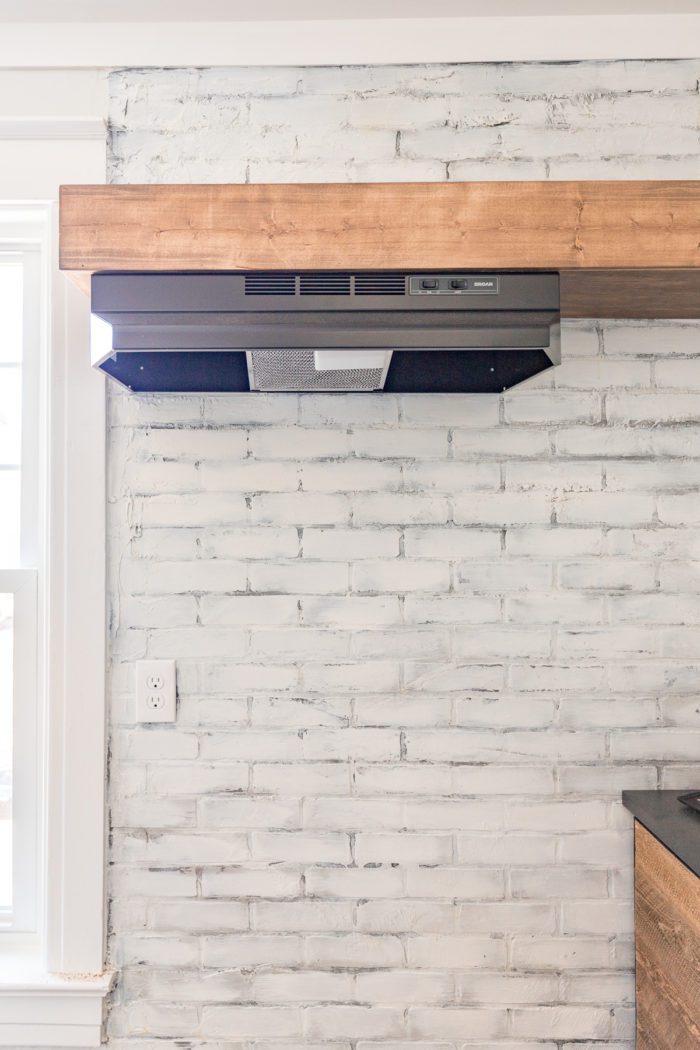Consequently, a Range Hood lessens the radiation and smell from preparing food. For this reason, it is simpler to keep the kitchen tidy, and the atmosphere is better.
A range hood is typically found in a kitchen. Its function is to remove smoke and humidity from wooden cabinetry.
The kitchen must have air circulation to permit fresher air to circulate. Having a ridge vent will help you do this.
To attach range ventilation without a cabinet, follow these steps:
- Determine that the range hood is undamaged by looking it over. Its illumination and air compressor should be tested before fitting.
- Locate and label the location of the ductwork on the roof.
- Create the bracket’s layout and the fastening locations. The bracket’s outline should then be traced using tape.
- Trim a square inside the drawn boundary.
- Put two rafters in place, one on either side of the bracket. The bracket will be kept from collapsing by the rafters.
- The bracket must be fastened from all angles. Then, using a drill machine, you can add bolts to the rafters to stabilize the bracket.
- After that, release the air vents. Next, fixing brackets should be affixed to roof mounting on all four edges using a screw machine.
- Measure the burner to the attachment bracket’s end. They ought to be separated by 25 – 30 inches.
- Model-specific mounting procedures may vary, but the mounting bracket must securely and evenly support the range hood on all corners.
- Use a metallic sheet, often known as a chimney, to enclose the shell around the metal frame. Reinstall the filters after that.

A range hood is typically found in a kitchen. Its function is to remove humidity and dampness from sturdy kitchen cupboards. Additionally, a range hood diminishes the convection and smell that come from cooking. As a natural outcome, it is simpler to maintain cleanliness, and the air is better.
As a heavy device, a range hood needs a 110-V high voltage. So even though a specific circuit for the mini device is not required, you still don’t want to block the circuits already in place.

Estimate the overall weight of the circuitry if you intend to connect the range hood to an existing connection to ensure that the combined load does not exceed the circuit’s safe limit. Hiring a qualified engineer to construct a circuit is a good idea if locating a sufficient power supply is difficult.
While some are remarkably quiet, certain range hoods have an audible launching noise. The position of the fan motor greatly affects the disparity in loudness. Before making a purchase, thoroughly read the label or do some web exploration to find out where the compressor is.

Fixing screws are used to attach range hoods to the cabinet. Since the screws are typically approximately a half-inch long, the panel’s interior is not penetrated.
While the wiring is threaded through the junction and the anchoring screws are installed, the device is held in position. The lines from the range hood can be connected to the heat, passive, and grounding wiring from the main cable using wiring nuts once it has been firmly fastened to the kitchen bottom. Remove any coverings and install the filtration to complete the project.
Check specific regulations, including the company’s guidelines for the hood’s elevation restrictions. The range hood may also need to be modified to function without a duct.
Certain range hoods can function both with and without a duct system. Consult the owner’s manual for comprehensive directions on upgrading the range hood. You should generally spin the air compressor and attach a metal plate to enclose the aperture to make a range hood work without a duct.
We have finished discussing how to attach a range hood without cabinets. This information should have made fitting a ducted or ductless vent hood more easily.

